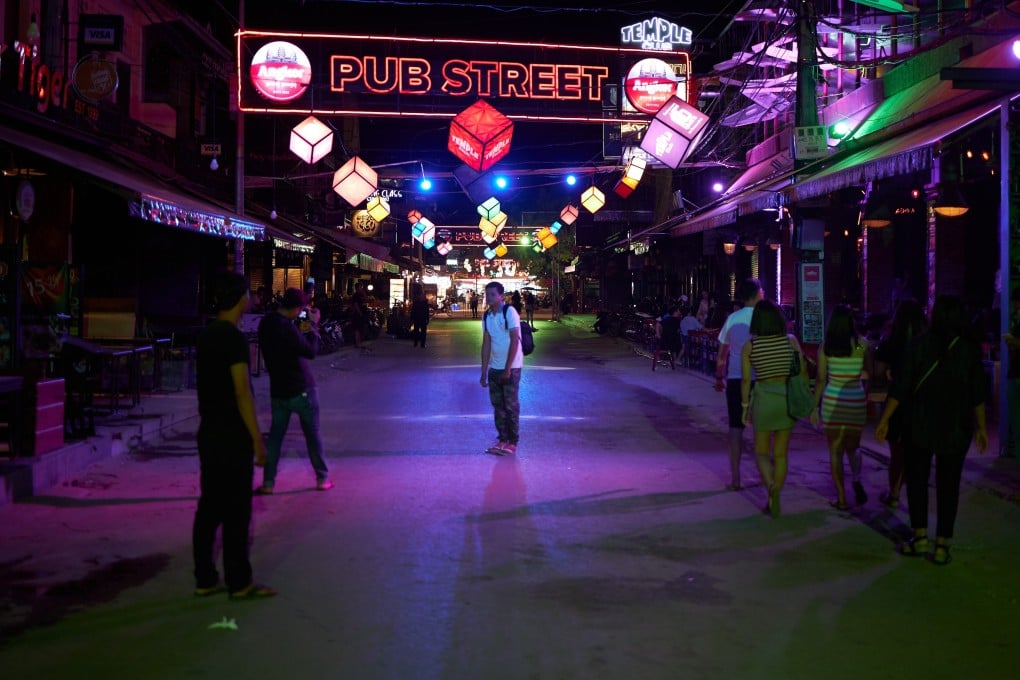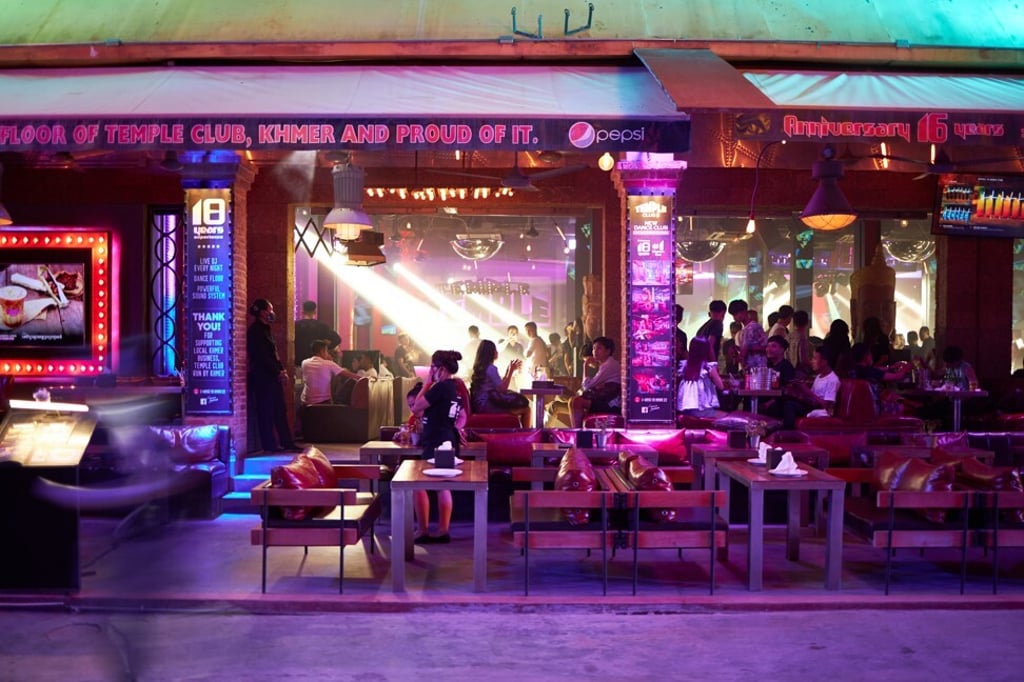The rise and fall of Cambodia’s Pub Street, the most notorious party strip in the country
- Pub Street, in Cambodia’s north-western city of Siem Reap, is still almost empty of revellers despite the area having reopened in June following pandemic closures
- Unchecked development and a lack of long-term vision had led to overcrowding and degradation, although alleys of cosmopolitan cool have grown on the periphery

It’s midnight on a Friday in what should be the peak summer season on Cambodia’s most renowned nightlife strip, in the north-western city of Siem Reap. Garish red signs overhead proclaim “Pub Street” but elsewhere the road is in near-total darkness. The atmosphere is ghostly, with barely a soul visible save for a few shadowy figures making their way home. The lights of the occasional tuk-tuk pierce the gloom, the drivers emerging from the half-light to offer rides to uninterested passers-by.
Closed is a row of establishments that includes the recently burgled Angkor What? Bar – Pub Street’s first bar and Siem Reap’s most infamous backpacker haunt – and The Red Piano, a classier affair that was patronised by Angelina Jolie in 2001, during the filming of Lara Croft: Tomb Raider.
The only nightspot open on Pub Street proper is the Temple Club – another long-standing tenant and the area’s most popular dance venue – where two dozen revellers jostle to the frantic strains of EDM, trying defiantly to recreate the heady clubland whirl of the carefree days before the coronavirus struck.

Many Pub Street restaurants closed voluntarily, pre-empting a catastrophic reduction in business, while others prepared takeaway or delivery meals only. In mid-March, entertainment venues, including bars, were ordered to shut, though some remained open by serving food, a loophole that allowed drinking dens to stay afloat. Although the area was reopened in June, there has been little sign of recovery on a strip that only eight months ago was abuzz with the hedonism for which it became notorious during the 2010s.